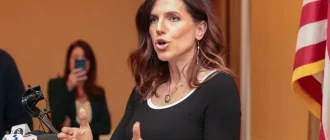In a significant policy shift, President Donald Trump has signed an executive order directing the dismantling of the U.S. Department of Education, aiming to transfer educational authority back to individual states and local communities. This move aligns with the administration’s broader agenda to reduce federal oversight in education and promote school choice initiatives.
Executive Order Details
The executive order, signed on March 20, 2025, instructs Education Secretary Linda McMahon to initiate the process of closing the Department of Education. The order emphasizes empowering parents, teachers, and local communities to ensure student success without federal intervention. However, it’s important to note that the complete dissolution of the department requires congressional approval, which presents a significant hurdle given the current political landscape.
Rationale Behind the Move
President Trump and Secretary McMahon argue that federal involvement in education has led to bureaucratic inefficiencies and a one-size-fits-all approach that doesn’t account for local needs. They advocate for increased parental control, the expansion of school voucher programs, and the elimination of what they describe as “radical indoctrination” in schools, referencing curricula that include critical race theory and gender studies.
Implications for Federal Education Programs
The proposed dismantling raises concerns about the future of several federal education programs:
- Student Financial Aid: The Federal Student Aid office, which oversees student loans and grants, faces uncertainty. Plans suggest transferring its responsibilities to the Small Business Administration, a move critics argue could disrupt services for millions of students.
- Special Education: Programs under the Individuals with Disabilities Education Act (IDEA) may be shifted to the Department of Health and Human Services, raising questions about the continuity and quality of services for students with disabilities.
- Civil Rights Protections: The Office for Civil Rights, responsible for enforcing laws against discrimination in education, is at risk. Its potential dissolution could weaken protections for marginalized student groups.
Public and Political Reactions
The executive order has elicited a spectrum of responses:
- Supporters praise the move as a return to local control and a necessary step to eliminate federal overreach in education.
- Opponents, including educators, civil rights organizations, and some lawmakers, warn that the dismantling could exacerbate educational inequalities and remove essential protections for vulnerable student populations.
Connection to Project 2025
The initiative aligns with “Project 2025,” a comprehensive policy blueprint developed by conservative think tanks outlining a vision for a potential second Trump term. The project advocates for the closure of the Department of Education, the expansion of school choice, and the reduction of federal involvement in education, emphasizing a return to traditional curricula and values.
Conclusion
While the executive order marks a significant shift in federal education policy, its full implementation faces legal and legislative challenges. The coming months will be critical in determining the future of federal involvement in American education and the potential impacts on students, educators, and institutions nationwide.






